
 POSNA.org
POSNA.org
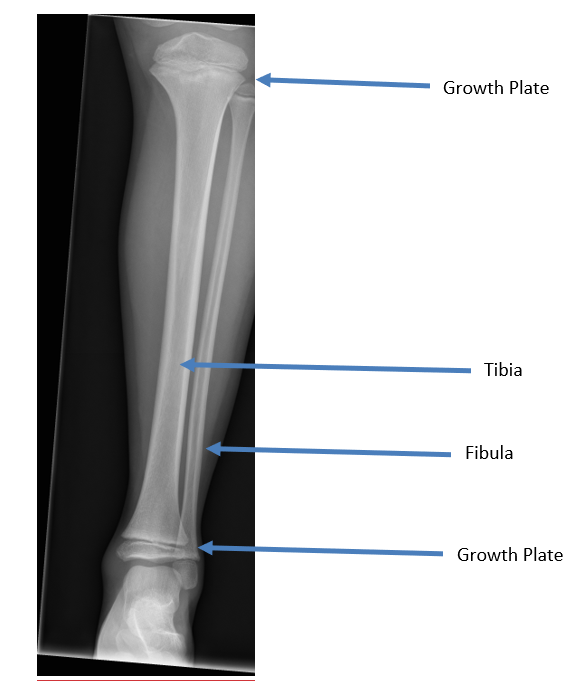
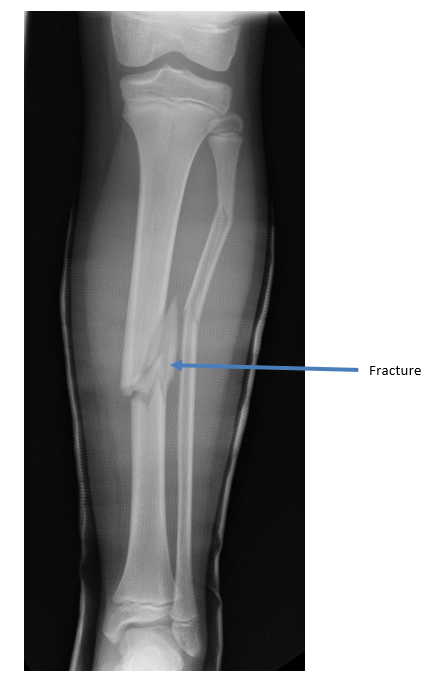
A crooked, swollen, and painful leg should be checked for a tibia fracture. Children with this injury may be unable to walk. This injury commonly occurs from low-energy trauma such as sports, but it can also occur with high-energy trauma such as a car accident. Tibia fractures usually occur as isolated injuries, but the child should be checked for other injuries in a high-energy collision. Non-accidental trauma (NAT), or child abuse, should be considered in infants and young children that are not yet walking. In cases of non-accidental trauma, the tibia is the 2nd most commonly fractured long bone in children.
Doctors will check the skin and touch different areas to confirm that the fracture does not extend to the growth plate, knee, or ankle. He or she will also palpate the muscles of the leg, and check the nerves and circulation to the foot.
In most cases, an X-ray will be performed to confirm the diagnosis of a tibia fracture. The x-rays include the entire tibia and fibula bones. Other areas of the leg, such as the femur (thigh bone), knee, or ankle may be imaged to rule out other breaks or injuries. Your doctor may order additional tests, like a CT scan, if the break is near the joint or growth plate. The CT scan allows your doctor to closely examine the fracture and helps to guide treatment or surgery.
Tibia fractures are treated based on the location and alignment of the fracture as well as the age of the child. Most tibia fractures in children can be treated in a cast or a boot. In some cases, the child may need to be sedated to set the bone before placing the cast. Weekly follow-up may be needed to make sure the bone does not move. The total time in the cast can be up to three months, but really depends on how the bone is healing and the age of your child. Your doctor may also cut a wedge into the cast and allow it to bend to straighten the bone while it is healing. The child may not be allowed to put weight on the leg for the first few weeks, but your doctor may allow some weight-bearing or walking after several weeks if it has healed enough on an X-ray.
Surgery may be needed if there is a break in the skin with exposed bone, if the bone cannot be lined up appropriately, or if the bones begin to heal in a poor position. Different types of implants can be used to fix the broken bone. Depending on the location of the fracture and the age of the child, your doctor may use metal pins, flexible nails (rods), rigid nails (rods), or a plate and screws to fix the fracture. A cast may still be needed to protect the bone during healing after surgery. In cases with severe damage to the skin and muscle, an external device made of pins and bars (external fixator) may be used to keep the bones aligned during healing.
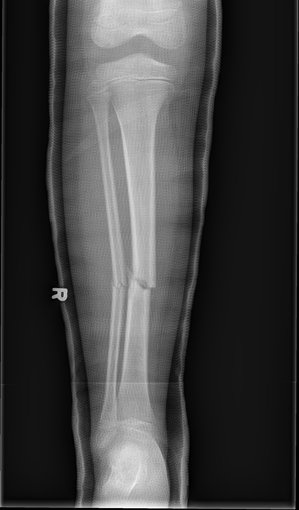
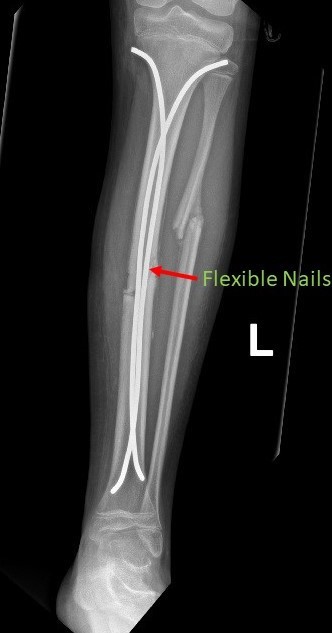
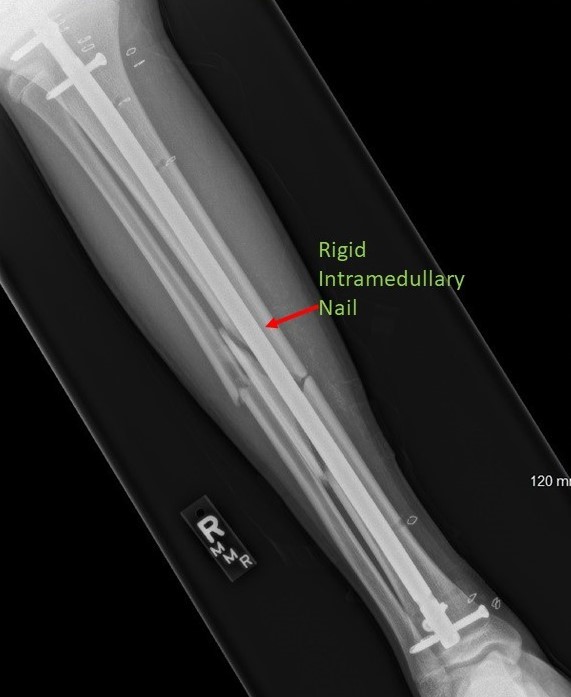
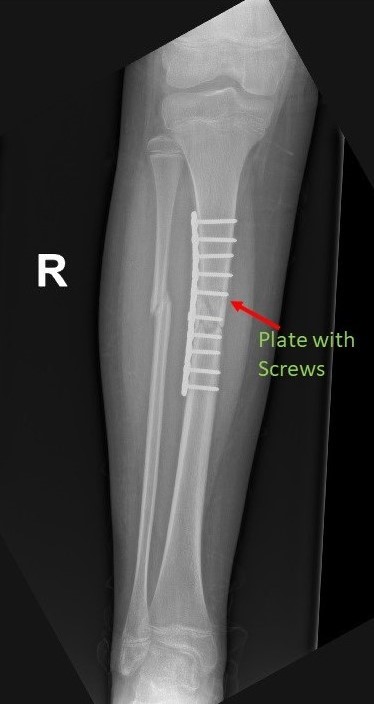
Most children recover from their tibia fractures within a few months. After they come out of their cast, they will often limp and turn their feet out for a short period of time. Fractures that are treated in a cast may not heal completely straight. Some angulation is acceptable, and the bone can grow straight over time.
In some cases, the doctor may monitor your child for a few years to make sure the bone grows straight. Most children will not require physical therapy to regain their motion and strength in that leg. If your child was treated with an implant, the doctor may recommend removing the implant in the future.
Children are not little adults, but like adults, they need expert care. A pediatric orthopedic surgeon should typically manage these injuries in children in order to make sure the fracture is adequately aligned, to decrease the risk of complications, and increase the likelihood of a good outcome.
Page QR Code:
